by The Bolton Group
UPDATE 2019: NEW Electronic Push-To version was at Kelling Heath, September 2019.
• Encoders on both axes for fast and easy object location.
• Wireless integration with Sky Safari on your phone/tablet.
• Sky Safari will display the location of the telescope on its sky map.
• All you have to do is push the scope so its location point is over the object.
• Object will then be visible in the eyepieces!
• Available for sale - please contact.
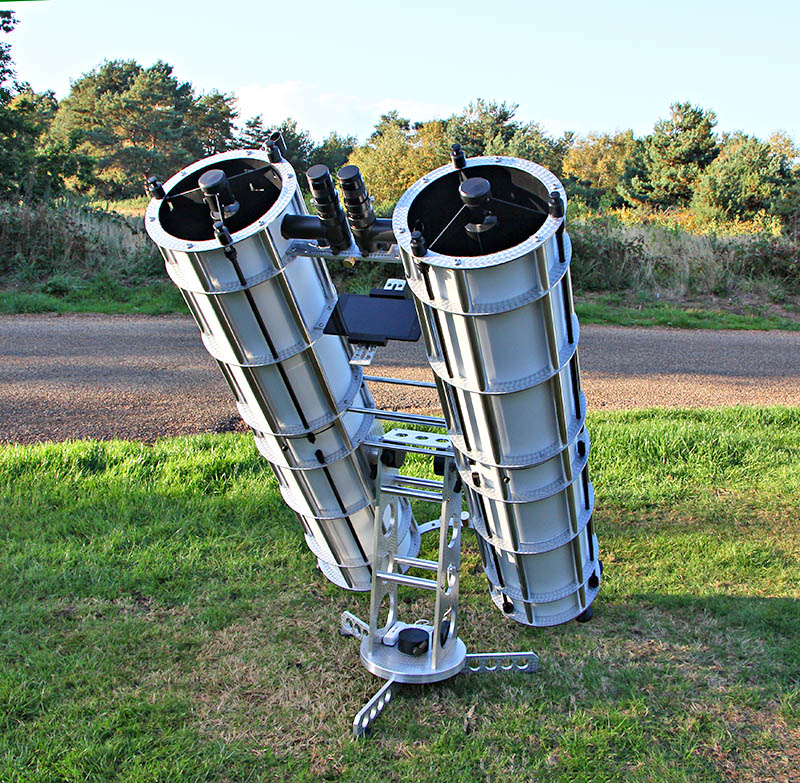
Latest Model (Pair 008) at the Kelling Heath Star Party. They are complete with shaft encoders and wifi. Note the main mirror adjusters now reach to the top of the tubes for easy collimation.
UPDATE 2016: A second pair of binoculars has been completed and is now available. SOLD
The latest model was tested out at this year's (2016) Kelling Heath Star Party and proved to be probably the best pair ever made. Images were apo refractor like. New to this pair is the addition of polypropylene inner lining tubes covered in black velour flock. The eyepiece tubes have also been enclosed. They are now much more suitable for less than absolute dark locations. At Kelling the number of "oh my God" comments by first time users probably broke all records! Users were blown away by the experience of using two eyes. My favourite was the Veil Nebula and even the usually boring M31 was spectacular.
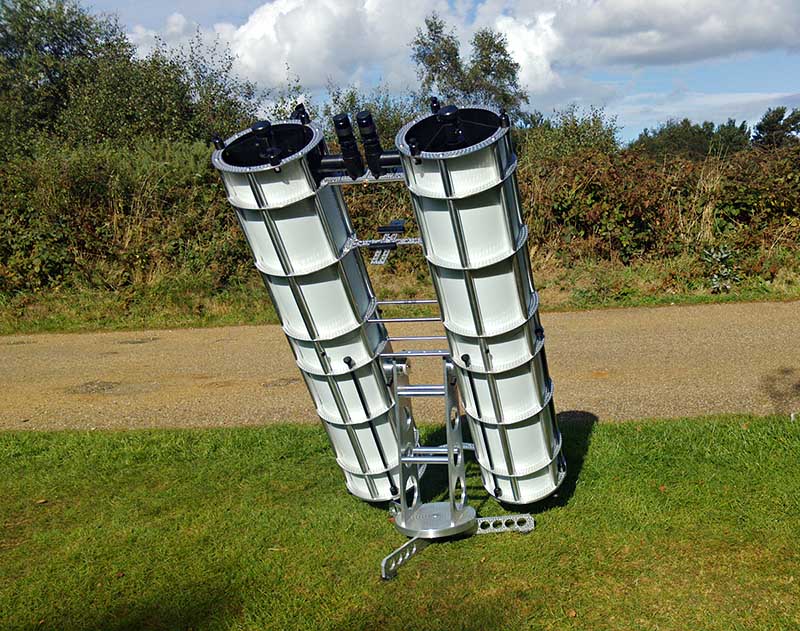
Binocular Telescope Pair 007
Note a Tablet holder for using planetarium software (Skeye) to guide the binos to their target has been added to the design. It makes it easy to push-to.Gerald and Brian have done it again - another fabulous pair of large binoculars. Tube assemblies/optical tubes are by Gerald and the 6 mirrors by Brian.
Below is the sixth pair and they incorporate all their experience and know-how gained along the way. The Japanese have a word for it - Kaizen - continuous improvement. They are 200mm aperture again but have gone back to the full skeleton tubes and adopted a slightly longer f/7 focal ratio.
To go with these new binos, Brian has produced another superb set of matched mirrors. Under autocollimation (double light pass doubling any errors) they exhibit virtually straight Ronchigrams as is his norm.
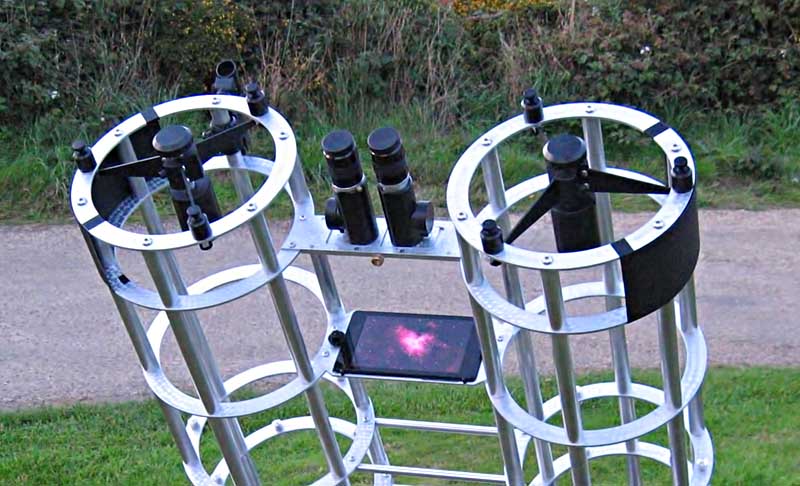
Tablet Guiding
Below are the binoculars on display at the Kelling Heath Star Party, September 2014. We had two good clear nights and the binoculars performed magnificently - probably the best ever!
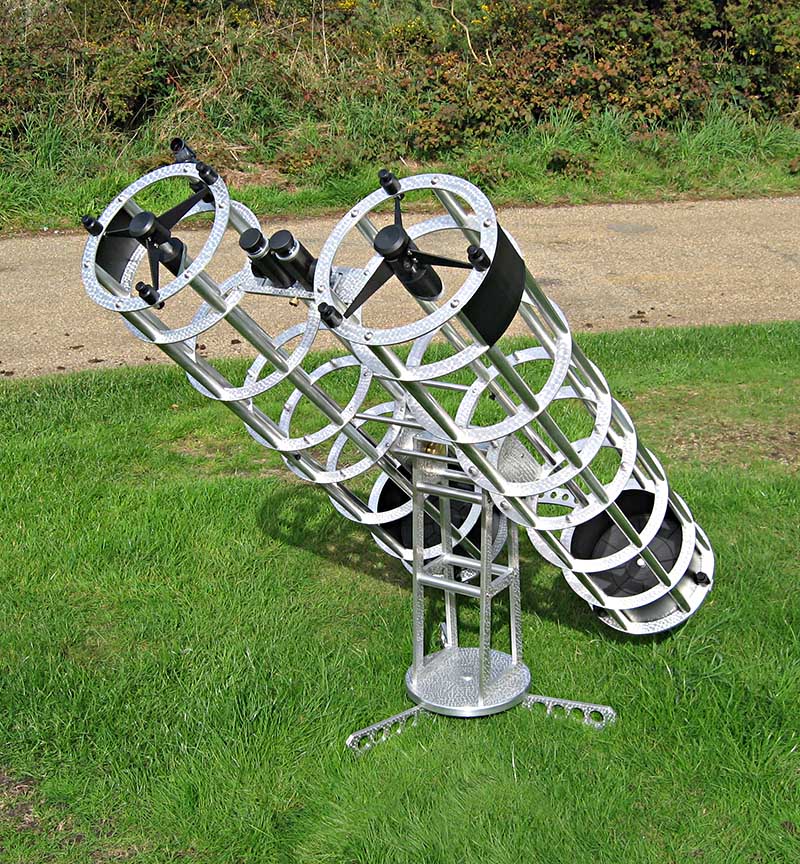
The finished binoculars (Pair 006) ready for Kelling Heath 2014.
All design goals have been met, ie:-
1. Ultra stable
2. Hold collimation
3. One touch inter-ocular adjustment
4. Easy one-man assembly and move
5. 60 lbs total weight
6. Eyepiece height at sensible level
Note although the side-bearings look like simple Dobsonian bearings they have real bearings - no teflon here. The bottom bearing (azimuth) is a giant ball race.
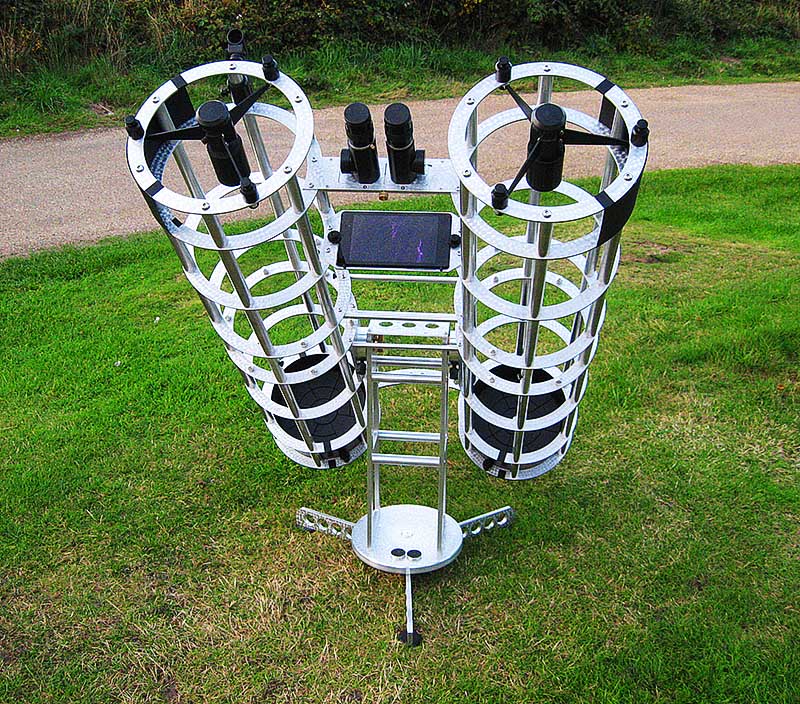
The inter-ocular adjuster is a single thumbscrew just below the eyepiece plate
They dis-assemble into 3 components for easy transport and storage. What assembly there is, is by thumb-screws - no allen keys required.

Mount

Mount with bottom cage lowered on

Top cage ready to go on
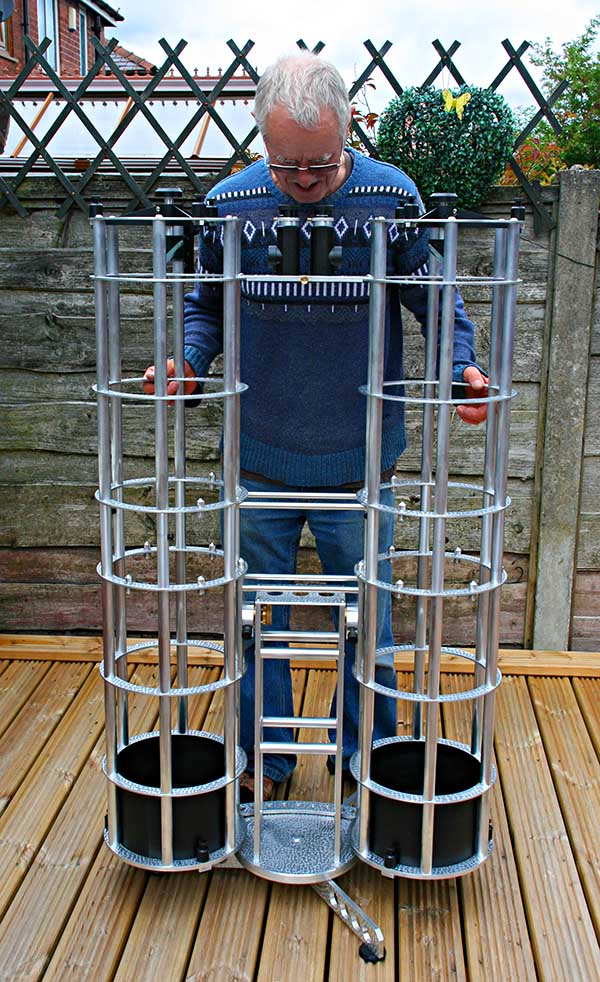
Gerald and the assembled binos - note new "secret" joins to tubes.
The f/7 focal ratio has been chosen to provide a very practical eyepiece height.
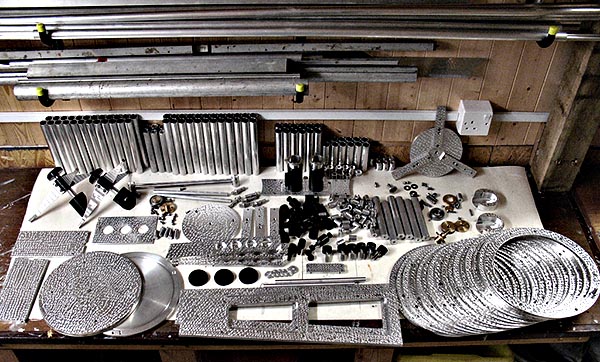
All the parts (about 500) before assembly.
Optics
All the optics were made by Brian ie the 2 matching parabolic mirrors, 2 elliptical secondary flat mirrors and 2 elliptical flat tertiary mirrors. The main mirrors are 200 f/7 (1400mm focal length) and are perfectly matched. They were tested using autocollimation with a high quality test flat. In this test the light strikes the mirror under test twice. This is therefore a severe test as any errors present are doubled. They are certainly better than 1/10 wavelength accuracy probably nearer 1/20 wave.
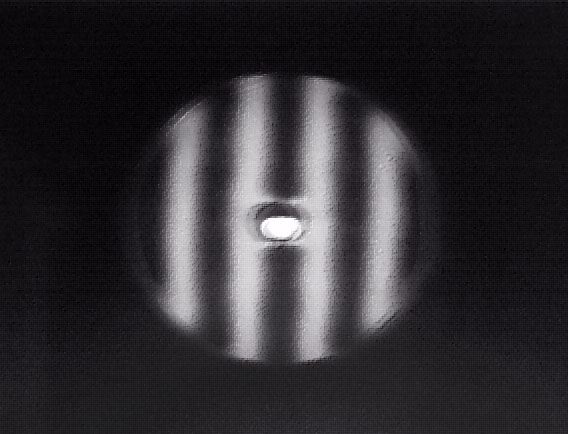
Ronchigram of one of the mirrors - no turned down edge here!.
The f/7 focal ratio, as well as giving a sensible eyepice height, provides other benefits too. It has a bigger coma free field and it requires smaller secondary mirrors - an important factor given the longer light path through to the eyepieces.